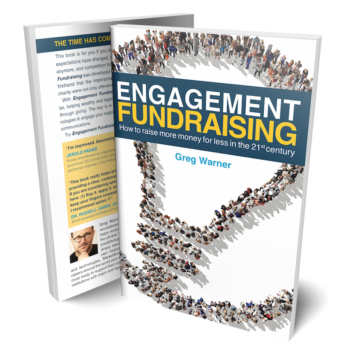We use cookies to ensure that we give you the best experience on our website. By continuing to use this site, you agree to our use of cookies in accordance with our Privacy Policy.
 Login
Login
Your Role
Challenges You Face
results
Learn
Resources
Company
9 reasons why people put money in holding pens (such DAFs or foundations) instead of giving directly right away


1. Indecisive. They want and need to give and they might have organizations in mind, but they haven’t decided where to give yet.
2. Fearful. They are afraid to give impulsively. They’ve done that before and encountered donor remorse. So they put the money in the holding pen as a ‘circuit breaker’.
3. Unprepared. They have a good idea of which organization they want to give to but feel they still need to do their due diligence before they pull the trigger
4. Uncertain. They want to be sure they can make an impact and get the results they desire from their gift so they need more time to become convinced.
5. Distrustful. At this time, they feel that no organization is deserving of their money (possibly because the staff they’ve met with at various organizations has been off-putting, their missions seem unclear or they are not sure they can be trusted). Yet, they do believe they’ll find a deserving ‘partner’ they can trust some day. So they put the money aside in hopes that that will happen sooner or later.
6. Indignant. The fundraisers they have met have not shown sincere interest in them, their life story and how it entwines with the mission, their goals and desires, and how they are hoping to find meaning in their life. So, they put the money in the holding pen figuring that special someone or ‘some-cause’ will come along showing interest in them, not just their money.
7. Considerate. They want to involve their significant other or their spouse. Putting the money aside as they discuss their options ensures that everyone’s voice can be heard.
8. Joyful? Perhaps they believe (subconsciously) that, by using those instruments, they get to feel like they’re giving the money twice. First when they move it to the ‘holding pen’ and then again when they recommend the money goes to its final destination. Therefore, they get a double dose of dopamine (the feel-good-drug).
9. Greedy? The tax write-off is always a nice incentive. But make no mistake, these people are charitable. They DO want their money to be used to help others. They are not hoarding it. If they simply were hoarders, they’d never put it in a DAF or foundation in the first place. Giving is still giving. A tax write-off only reduces the ‘cost’ of giving. If you give them value (a good reason to ‘recommend’ the money go to your cause) they’ll make the recommendation in your favor.
Related Posts:
>>Ya Gotta Give ‘Em Value
>>Value
LIKE THIS BLOG POST? LEAVE YOUR COMMENTS BELOW AND/OR SHARE IT WITH YOUR PEERS!
Get smarter with the SmartIdeas blog
Subscribe to our blog today and get actionable fundraising ideas delivered straight to your inbox!

10. Expedient/Prudent: This past December an annual donor to our institution created a DAF, because she had significant capital gains and wanted to get the tax write-off in 2021 but wanted to have more time to distribute the funds to a number of organizations. I also think the “windfall” of the gains had her thinking she could cover a couple of years of giving with this one-time distribution. By creating the DAF, she got the full tax benefit with one transfer of funds and then had time to distribute (recommend) the gifts as she was ready.
11. Good marketing on the part of the DAFs. I believe there are fees associated with setting up a DAF, for the charitable foundation to manage the funds and administer them as directed. Why would someone go to the bother of the paperwork to set up something like that and diverting a bit of charitable funds away from the charities? Because the Charitable Funds and Financial Advisors recommend them and market them, as wise, easy, convenient, flexible. Makes me wonder what we charities are doing that makes a donor think a direct donation seem less easy, convenient or flexible.
Good one Kathryn. Thanks for sharing.
12. Privacy. I have heard from a number of people who use DAFs that it helps the donor remain anonymous or at least protected from being over-solicited.